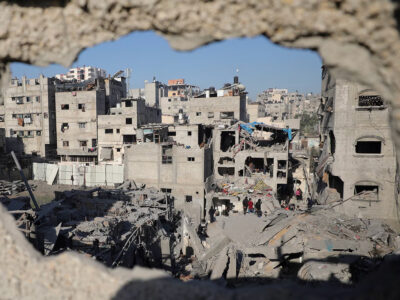The property boom in the UAE has been well documented, but in Saudi Arabia the Kingdom is witnessing similar highs, with house prices increasing
New data released by global real estate consultant Knight Frank revealed that house prices in Riyadh have risen at their fastest pace in at least five years, with apartments posting a growth of 20 percent, while villas have seen an 18.6 percent increase in sales prices.
Riyadh is leading the charge, with apartment prices surging by 20 percent in the last 12 months, however, says Knight Frank, this significant growth is not without its consequences. Demand is showing signs of being stymied as households find themselves needing to save for longer before being able to transition to home ownership. The resultant impact is a decline in deal numbers, which fell by 27 percent in the last 12 months”.
Faisal Durrani, Partner – Head of Middle East Research at Knight Frank, said: “The spectacular house price growth in the Kingdom mirrors what we are seeing around the world. However, in Saudi Arabia, the government’s programmes to boost home ownership have turbo-charged demand, development activity and house prices.”
Knight Frank’s analysis has revealed that transaction volumes across Saudi Arabia fell to 60,000 during Q1. Total deal values have however only receded by 2 percent to SAR 40.4 billion, reflecting the stellar price growth being experienced in all segments of the residential sector.
With Riyadh’s re-positioning as the Kingdom’s economic heart, the city’s workforce is being bolstered by a significant rise in younger Saudis relocating to Riyadh to take advantage of the high concentration of new jobs.
Riyadh’s new and semi-transient additions are however displaying a preference for apartments over villas and are also more focused on renting homes, rather than buying them.
“Despite the receding levels of demand, vendors are either holding firm on prices, or turning to the rental market instead further contributing to the dip in overall deal activity and indeed further exacerbating the shortage of homes available for sale”, Durrani said.

Jeddah property prices
Mirroring Riyadh, house prices in Jeddah have seen rapid growth over the last 12 months, says Knight Frank. Apartment prices increased by 4.9 percent in the year to Q1 2021, while villa prices rose by just 1.2 percent over the same period.
The number of residential transactions in the Red Sea coastal city increased by 5 percent in the last 12 months, while the total value of residential sales increased by 46 percent over the same period. The greater rise in sales value over volume reflects the substantial growth in house prices in Jeddah.
Knight Frank points to anecdotal evidence of a return of Saudi nationals and expatriates to Jeddah, slowing the loss of talent to Riyadh. Numerous government and private sector entities, like ROSHN, Upton Jeddah, Al Ballad Development, and Jeddah Central, have established their offices in Jeddah, offering multiple employment opportunities for Jeddah’s residents. As a result, Saudi nationals and expatriates are returning to Jeddah, underpinning demand for homes.

Dammam Metropolitan Area (DMA) prices
Like the rest of Saudi Arabia’s major markets, the residential market in the Dammam Metropolitan Area has witnessed a profound price increase. Average apartment prices in the DMA increased by 6.1 percent in the year to Q1 2022, while average villa prices increased by 2.5 percent over the same period, according to Knight Frank’s research.
“Anecdotal evidence of increased rates of job creation fuelled by rising oil prices in the Kingdom’s oil-producing heartland are underpinning rising demand for homes in the DMA, which is, in turn, helping to lift home values.”
Still, just like the rest of Saudi Arabia, mounting affordability issues are driving demand away from villas, which has led to a drop in both demand and prices for stand-alone family homes. Apartments on the hand are experiencing a resurgence in demand”, said Durrani.
Mirroring Riyadh, the DMA’s residential market experienced a 32 percent decline in the volume of deals over the last 12 months, while the total value of residential transactions decreased by 18 percent over the same period. The rising affordability challenge, combined with a lack of suitable supply for mid to lower-tier buyers, is contributing to slowing sales activity.





